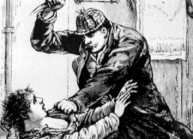Designers Turn Tel Aviv Street Art Into One-of-a-Kind Furniture

Courtesy of Yoav Gurin
Tel Aviv–based industrial designers Ariel Zuckerman and Eran Shimshovitz came up with a creative way to get local street artists to help them design their new line of furniture. They hung wooden boards around the southern Tel Aviv neighborhood near their workshop and waited for graffiti artists to do their work.

Courtesy of Yoav Gurin
The designers surveilled the progress of the boards each morning. Sometimes they were left untouched.

Courtesy of Yoav Gurin
They watched as pencil sketches appeared and layers of paint were added and images came to life.

Courtesy of Yoav Gurin

Courtesy of Yoav Gurin

Courtesy of Yoav Gurin
Once they were satisfied with works of anonymous street art, they took the boards back to their studio and deconstructed them, fashioning them into a series of vibrant one-of-a-kind “Street Capture” furniture that includes a console, coffee table, and end tables.

Courtesy of Yoav Gurin
Zuckerman told me in an email that they didn’t leave instructions for the artists or otherwise publicize the project in order to achieve a spontaneous result. They bill the project as a way to preserve the spirit of a disaffected area of disappearing wood workshops, where young designers like themselves are setting up in empty storefronts. The area now teems with nightlife and street art after dark.

Courtesy of Yoav Gurin
Zuckerman said that when the graffiti artists signed their work, the designers contacted them to ask permission to sell the work and offered 15 percent of the profits. He said that since word has gotten out, the graffiti experiment is now “more of a collaboration.” They are now planning to produce a series of limited-edition tables that will incorporate different paintings into the same furniture design, inspired by the street art.

Courtesy of Yoav Gurin
So what do the artists think about seeing their paintings carved up and deconstructed into furniture? “The artists usually love it because the result is surprising and new to them,” Zuckerman said, adding that the furniture brought a new and third dimension to their two-dimensional work.











